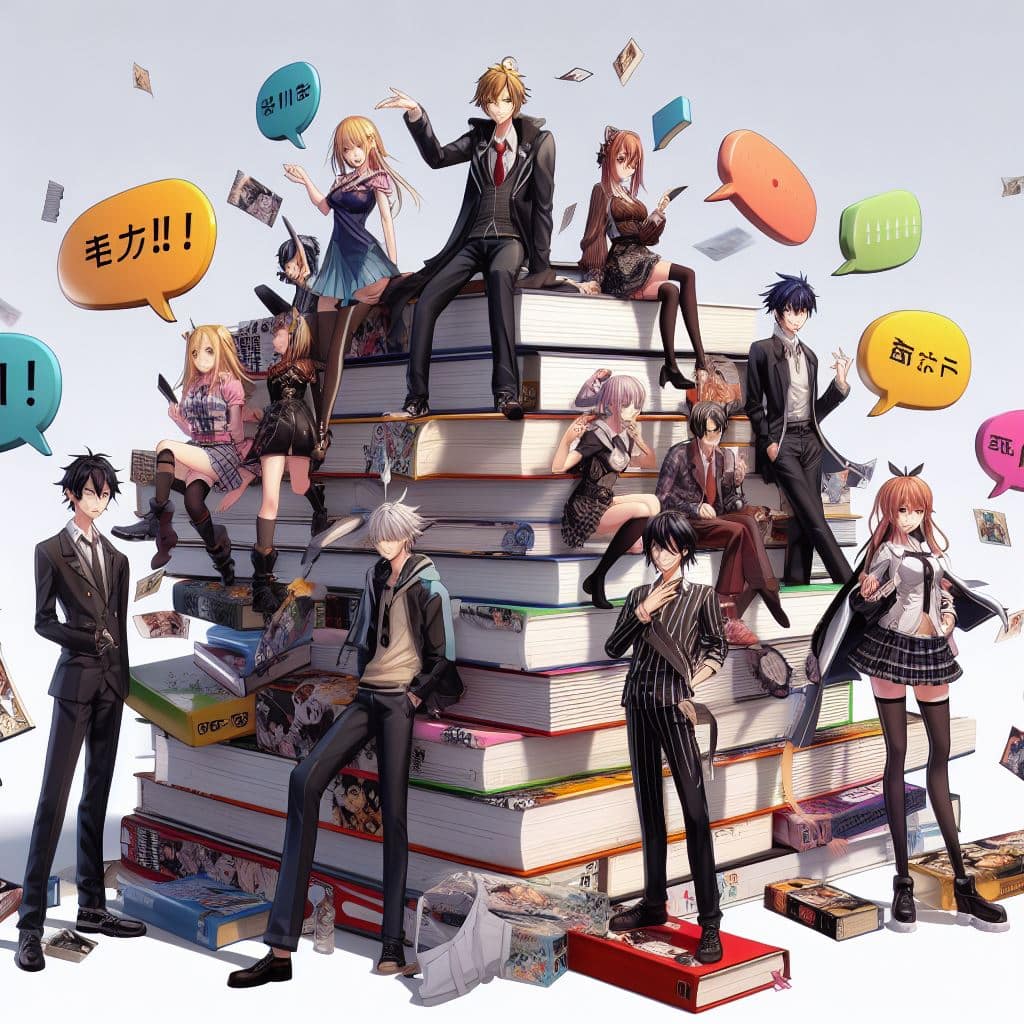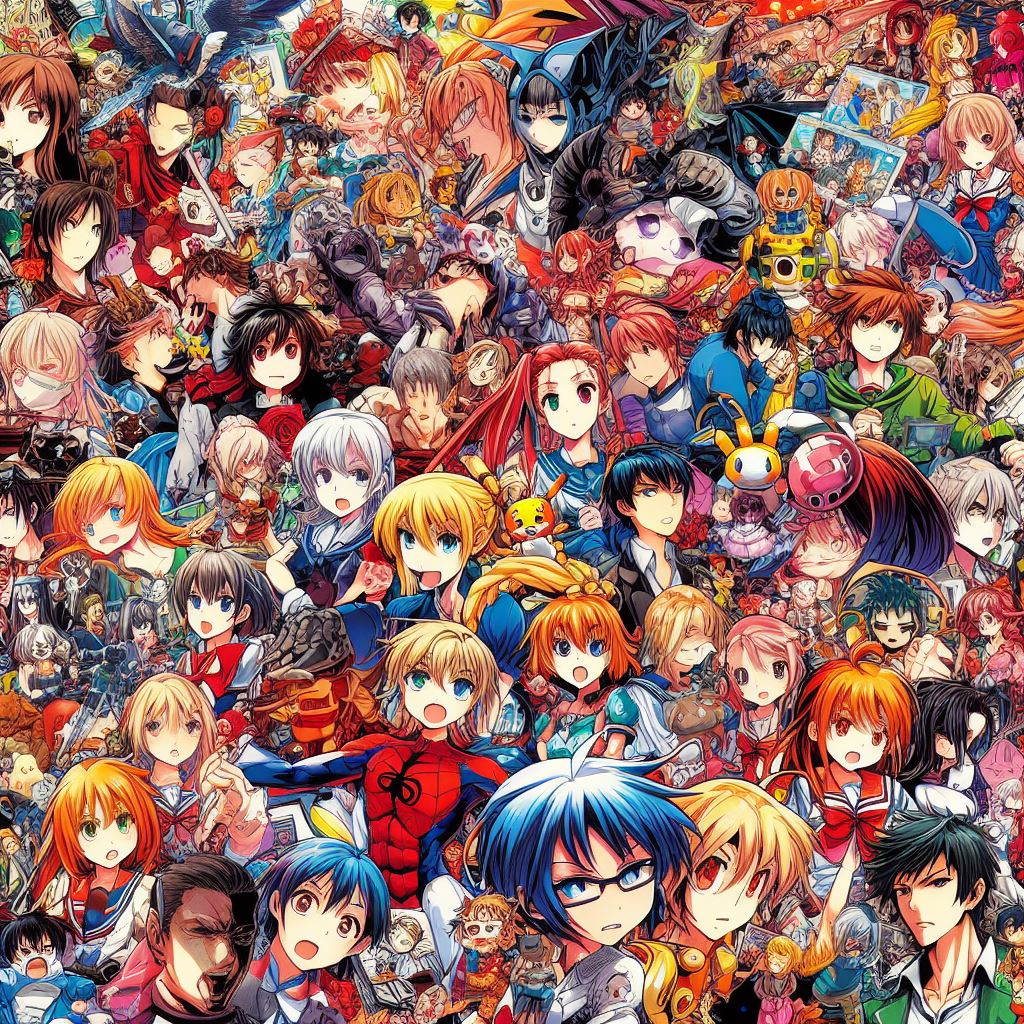“Manga Mania” is an enlightening article that delves into the captivating world of Manga, a genre of Japanese comic books and graphic novels known for its distinctive, bold style, and enthralling narratives.
The article explores the evolution of Manga, shedding light on its historical roots and its transformation into a ubiquitous part of Japanese culture. It highlights the unique characteristics of Manga, such as its predominantly black-and-white artwork and action-packed tales of adventure, fantasy, and intrigue.
The article traces the origins of Manga way back to the 12th century, where Japanese artists created illustrated scrolls. Historians often regard these ancient scrolls as the precursors to modern Manga.
The term “manga” was first used to describe the book Yukikai, marking a significant milestone in the evolution of this art form.

The narrative further discusses the artwork of Osamu Tezuka, often hailed as the father of modern Manga and his profound influence on shaping the Manga as we know it today.
The historical exploration in “Manga Mania” provides readers with a rich understanding of how Manga has been a long-standing, integral part of Japanese culture. It also suggests a fascinating continuum from ancient illustrated storytelling to the contemporary, globally recognized genre of Manga.
Through this historical lens, readers can appreciate the deep-rooted tradition and the enduring appeal of Manga, which continues to captivate audiences worldwide with its imaginative storytelling and artistic expression.
Manga Mania Article Answers
| Question | Answer |
|---|---|
| According to the Article, which of these happened second? | The word “manga” was used for the first time to describe the book Yukikai. |
| Which of these is most important to include in a summary of… | Manga are Japanese-style books and graphic novels that are known for their bold style, mostly black-and-white artwork, and action-packed tales of adventure, fantasy, and intrigue. |
| The author’s purpose for writing this passage was to _________. | suggest that today’s manga could trace its origin all the way back to the 12th century. |
| Which is the closest synonym for the word predecessor? | Forerunner |
| Suppose Carlos wants to find out more about the birth of modern… He would find most of his information ____________. | on a TV program about the artwork of Osamu Tezuka. |
| In this passage, the word epic means _________. | very great or impressive |
| Which of these is a statement of opinion? | Although visually interesting, manga is a childish art form that isn’t appropriate for an adult audience. |
| Which information is not in the Article? | What the stories that were illustrated in the 12th-century scrolls us about |
Key Vocabulary
- Predecessor (Forerunner):
- Definition: Something or someone that comes before another in time, place, rank, or in development.
- Example Sentence: The illustrated scrolls of the 12th century are seen as the predecessor or forerunner to modern Manga.
- Epic:
- Definition: Very great, large, or impressive; often used to describe grand historical or fantastical tales.
- Example Sentence: The article describes the backstory of Manga as an epic journey from ancient scrolls to contemporary graphic novels.
- Precursor:
- Definition: Something that comes before something else and often leads to or influences its development.
- Example Sentence: Historians view the 12th-century illustrated scrolls as the precursors to modern Manga, showcasing a long tradition of graphical storytelling in Japanese culture.
- Ubiquitous:
- Definition: Seeming to be seen everywhere; very common or universal.
- Example Sentence: Manga has become a ubiquitous part of Japanese culture, with its influence extending to a global audience.
Summary of Key Points

1. Definition and Characteristics of Manga:
Manga, as explored in the article, is a genre of Japanese comic books and graphic novels characterized by its bold style, predominantly black-and-white artwork, and action-packed narratives encompassing adventure, fantasy, and intrigue.
This style of storytelling is a unique hallmark of Japanese culture and has a global following. These imaginative tales and distinctive artistic expression captivate readers worldwide.
2. Origin of the Term “Manga” with the Book Yukikai:
The term “manga” was first coined to describe the book Yukikai, marking a significant milestone in the evolution of this genre. This usage laid the foundation for what would become a widely recognized and celebrated form of artistic and narrative expression, distinguishing Manga from other comic and graphic novel genres around the world.
3. Historical Connection of Modern Manga to 12th-Century Illustrated Scrolls as its Precursors:
The article draws a historical lineage from the 12th-century illustrated scrolls created by Japanese artists to modern Manga. These ancient scrolls, rich in graphical storytelling, are seen by historians as the precursors to today’s Manga.
This historical connection underscores the deep-rooted tradition of visual storytelling in Japanese culture and the evolution of Manga over the centuries.
4. The Enduring and Ubiquitous Nature of Manga in Japanese Culture:
Manga has become an enduring and ubiquitous part of Japanese culture, reflecting the nation’s historical penchant for visual storytelling. Its widespread popularity and influence extend beyond Japan, showcasing the universal appeal of Manga’s thematic depth and artistic creativity.
The article highlights how Manga, with its epic backstory, continues to be a significant cultural export, resonating with audiences worldwide and contributing to the global appreciation of graphical storytelling.
Discussion Topics
1. The Evolution of Manga Over the Centuries and Its Impact on Japanese Culture:
- Discussion Prompt: Delve into how Manga has evolved over the centuries from ancient illustrated scrolls to the modern graphic novels we see today. What impact has this evolution had on Japanese culture and how has Manga become a representation of Japanese cultural expression globally?
- Possible Sub-topics:
- The transition from traditional illustrated scrolls to contemporary Manga.
- The influence of historical events on the themes and styles of Manga.
- Manga’s role in promoting Japanese culture and values to a global audience.
2. Comparison of Manga with Other Forms of Graphic Novels and Comic Books Globally:
- Discussion Prompt: Compare and contrast Manga with other forms of graphic novels and comic books from around the world. What unique characteristics set Manga apart, and how have these differences contributed to its global popularity?
- Possible Sub-topics:
- The stylistic and thematic differences between Manga and other graphic novel genres.
- The global influence of Manga on the comic book industry.
- Cross-cultural collaborations and the blending of Manga with other comic book styles.
3. The Artwork of Osamu Tezuka and Its Significance in the Birth of Modern Manga:
- Discussion Prompt: Explore the contributions of Osamu Tezuka, often hailed as the “God of Manga,” to the development of modern Manga. How has his artwork and storytelling techniques influenced subsequent generations of Manga artists?
- Possible Sub-topics:
- The iconic works of Osamu Tezuka and their impact on Manga and Japanese pop culture.
- The legacy of Osamu Tezuka in the global comic book industry.
- The evolution of Manga art styles and storytelling techniques post-Osamu Tezuka.
Additional Resources
- The History Of Japanese Of Manga – YouTube: A video exploring the history of Manga in Japan and its global influence.
- History of manga – Wikipedia: A comprehensive article tracing the history of Manga from its origins in the 12th century to its modern form.
- A History of Modern Manga – Amazon: A book that delves into the major events and artists who shaped the history of modern manga, focusing on the post-World War II era.
- The 6 Best Books On The History Of Manga And Anime – Crunchyroll: A list of recommended books that explore the history of Manga and Anime.
- The History of Manga in Manga — Google Arts & Culture: An interactive online resource that narrates the history of Manga through a Manga strip, from the Edo period to the present day.
Various museums in Japan and globally have exhibitions dedicated to Manga and its historical roots. You might want to check local listings or travel guides for museums or exhibitions showcasing ancient illustrated scrolls and modern Manga artwork.



